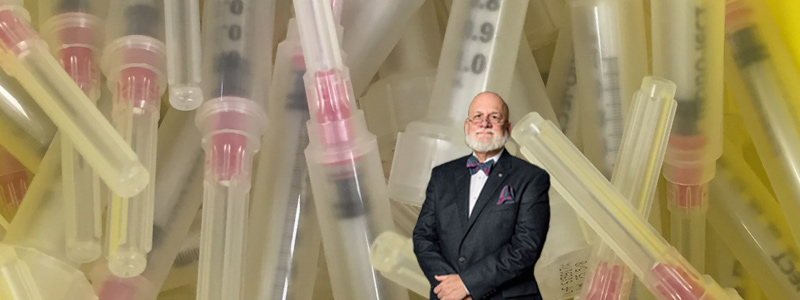There is a mystique that surrounds laboratory testing. The vast majority of us believe the values we get for any single test sample (blood, urine, saliva, whatever) represent our health status. On the one hand, this is truthful, especially when it comes to the most essential minerals in our body; sodium, potassium, carbon dioxide, acidity, and so on. Those values fluctuate in relatively narrow ranges, and we are very ill – or dead – when our levels fall outside those ranges. These numbers have been vital to health care for as long as we knew how to collect samples and test for specific substances.
A key to a broader understanding of laboratory testing is that we almost always test a sample and receive a snapshot of how things were at that precise moment. For elements that deviate little, this is good. However, there are a myriad of substances in the human body that change daily, hour-by-hour, or even every minute. In these cases, it is futile to take the results of a single test and apply some sort of therapeutic treatment. That would be reasonable if the snapshot represents the truth of our values day after day and minute after minute, but they don’t.
Here’s a personal example.
I attended a health seminar several years ago, right around the time when cholesterol testing was just beginning to be popular (when statin drugs were gaining in popularity). There was a sales booth set up that was selling cholesterol testing equipment. I had my cholesterol tested three times in two days, and the results were wildly different and not readily associated with what I had been doing or eating. One was “low,” and two were slightly “high.” I asked the doctor at the booth which level I should use. He said he didn’t know. That’s when I got my first indication that the entire cholesterol “thing” might be based more on selling drugs than on keeping me healthy. But, that’s another story. My point here is to demonstrate that cholesterol levels derived from a single blood test couldn’t be trusted. In my case, I would have been prescribed a drug based on two of the results and informed that I was “fine” based on the third.
Cholesterol levels vary because we need varying amounts of that critical “pro-hormone” to meet specific needs throughout the day. A snapshot test might reflect an average, but it is also likely it reflects the level during a moment when our general level is on the rise – or decline. A better indicator would be a series of tests over time accompanied by a search for a pattern. Cholesterol is part of the hormone system – the basic “starter material” for all hormones.
What about hormones? Like cholesterol, hormones rise and fall to meet our needs. As with all testing, the data for hormone levels are derived from a mathematical manipulation of data created by millions of tests over many years. The same variations that impact cholesterol alter the way our hormone tests are displayed.
Hormones
I’m often asked about a specific hormone results, “my blood test showed that my testosterone is low normal.” They want to know what I’d suggest as a hormone replacement treatment. When it’s my turn to speak, I ask if they know what their level was back when they were 21 years old. After decades of asking that question, nobody has been able to offer test values other than the ones they just received. It might be a benefit for everyone to start testing themselves regularly – even when feeling well. Such diligent tracking might offer a better picture of our hormone health. It wouldn’t take a computer or a math whiz to look at a series of reported data to identify trends; rising, falling, etc..
On the surface this seems like a plausible plan, but what about the overall cost (a combination of lab charges and time) of repeated testing? And, what would be the net benefit be if levels remained relatively stable or, possibly, jumped all over the place every time? Except for showing us how many resources we’ve wasted, there’d be little to no health benefit.
Individual test results are highly unreliable, but still much less expensive than repeat testing over the decades.
Here’s something to note; the vast majority of the laboratory values in the data banks are collected from hospitals and clinics. Those places are where sick people go. Over time, the large numbers tested to create a base of values that approach a normal distribution for most people. Sometimes the labs break out data by gender, and even by age. The fact remains, though, that every test is merely a value for that particular moment in time and might not relate to an overall health situation.
Value of Lab Report
Worse than providing imperfect results, health practitioners seem inclined to believe the numbers are useful and they find themselves “chasing” the resulting numbers by frequently adjusting dosing. Return visits are necessary, as are updated prescriptions with every change. The element that doesn’t seem to change is how the patient is feeling. Patients expect their doctors to find their specific problems and devise a solution. In addition to the levels of dissatisfaction, the process is time-consuming and costly. Many providers benefit, but the patient is still upset by poor health.
The promise of feeling better is made, but frequently the mark is missed.
A solution for the dilemma reached when chasing lab results is for the health practitioner to actually sit with the patient and discuss the problems and alternatives to treating the problems. Sometimes the answers aren’t found in a pill bottle, regardless of how many tests are performed. The cost of health care continues to skyrocket, but the level of health itself seems stagnant, or maybe worse.

